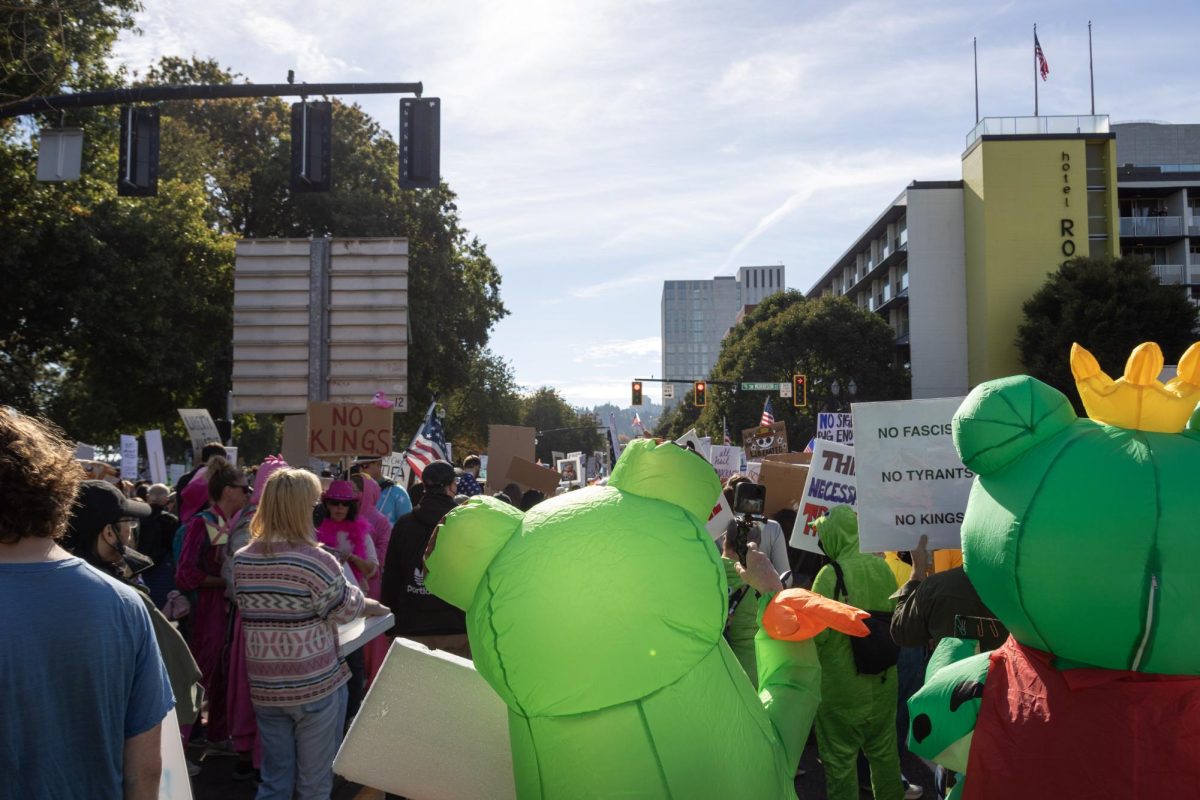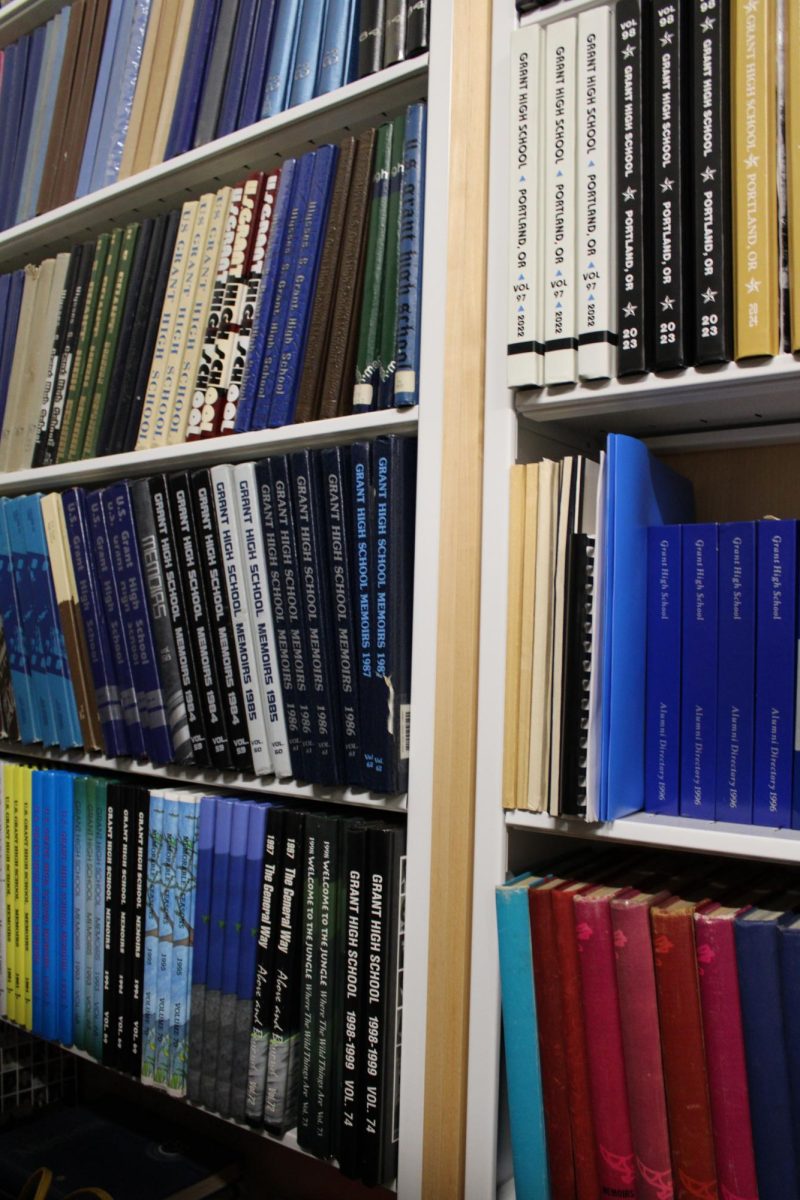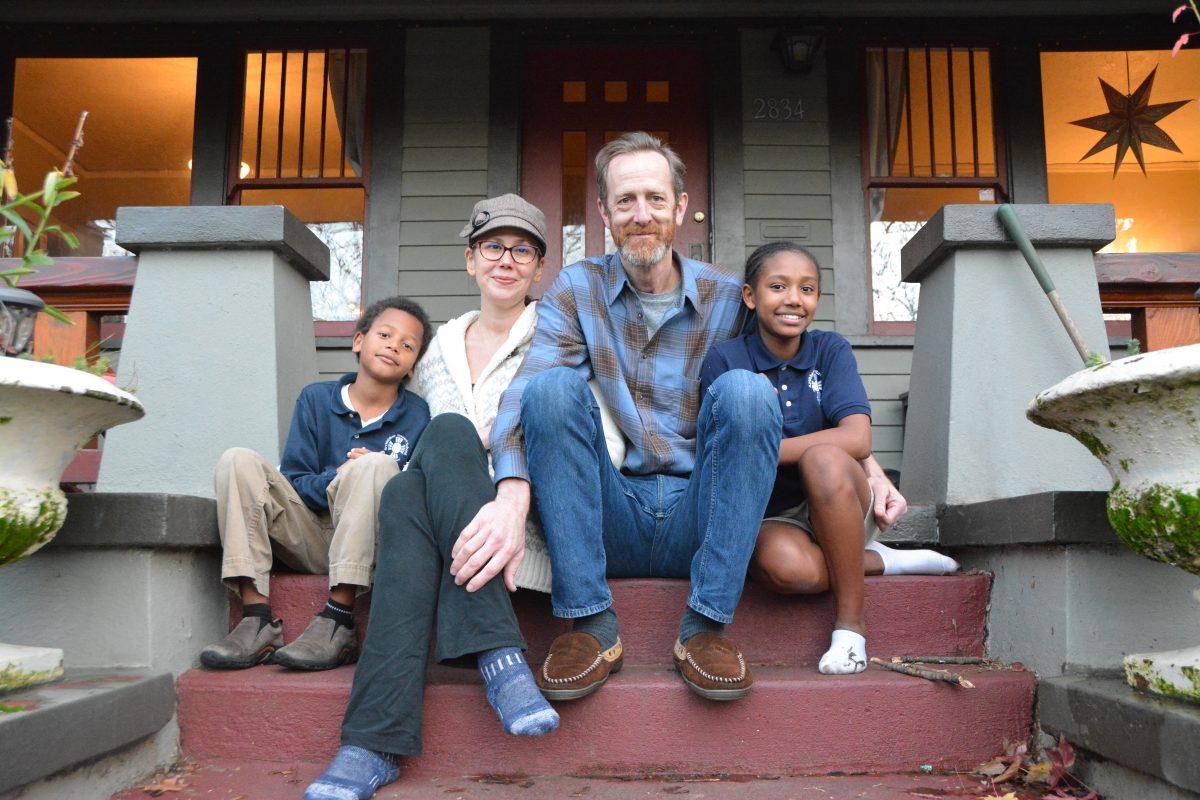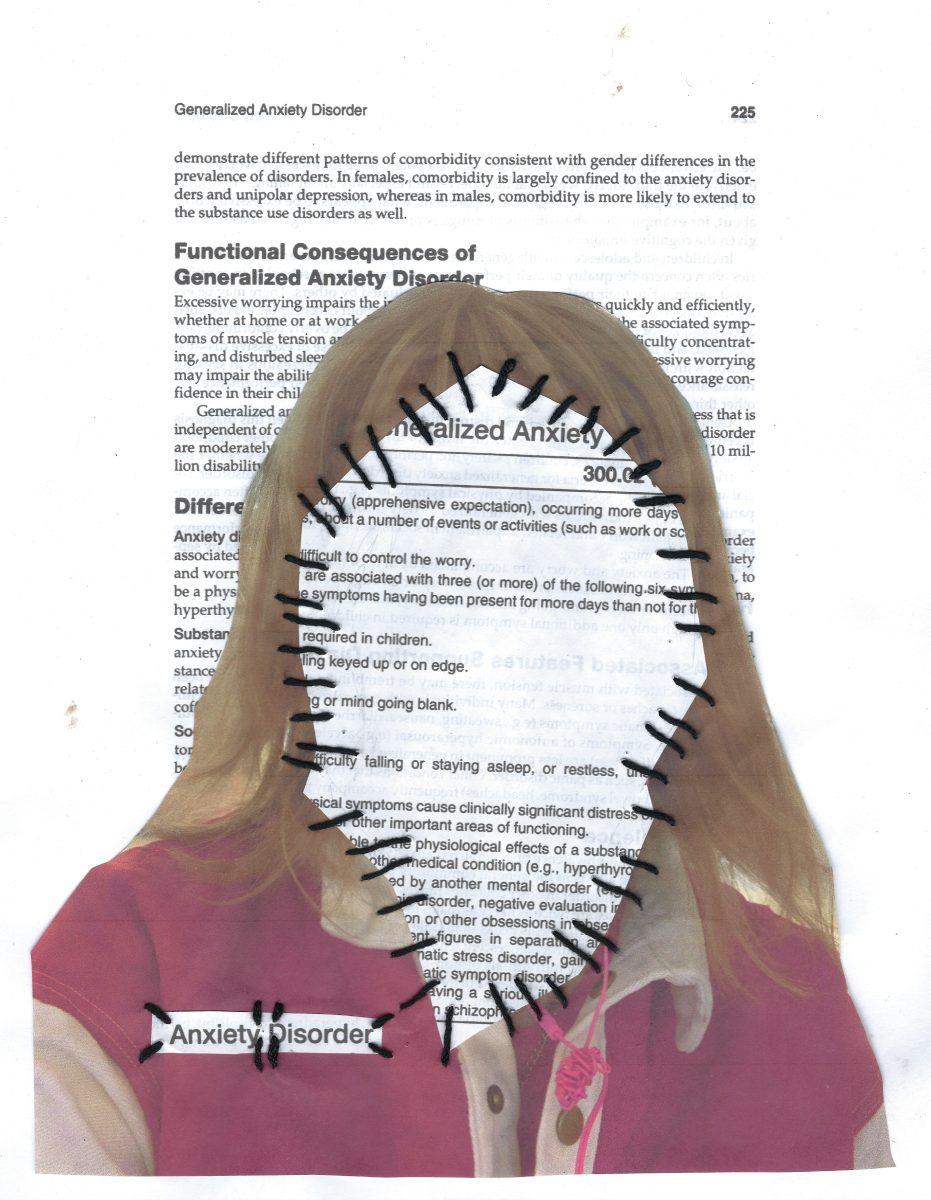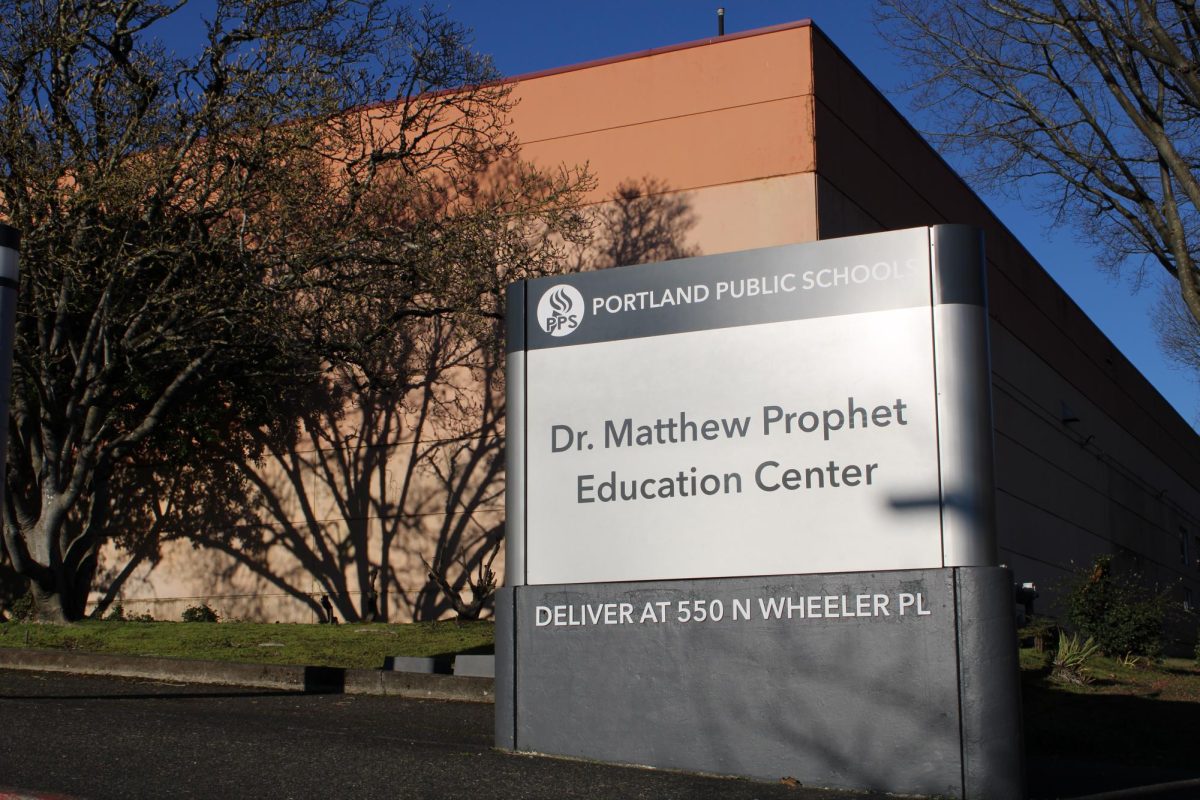In 2022, Portland Public Schools (PPS) paid the Säzän Group, an independent consulting firm, $250,000 to conduct an investigation into the district’s facility maintenance practices. Säzän found 20% of PPS’ buildings and facilities to be in “Poor” or “Failing” condition. PPS employees interviewed by Säzän cited widespread budget cuts in 2000 as the reason for these shortcomings. Industry standards recommend 113 full-time maintenance employees, not including supervisors and foremen, for a district of its size. PPS funded just 74 positions, including higher-ups, of which only 59 were filled.
With such reduced staffing levels, Säzän reported that the building area each PPS maintenance worker oversees exceeds industry standards by roughly 42,000 square feet. In an interview with the Northwest Labor Press, PPS electrician Ryan Healy says, “That’s technically nine electricians for 177 buildings.”
Operating at less than 50% of its suggested capacity, PPS’ ability to conduct preventive maintenance before severe problems arise was “eliminated” by the reduction in maintenance staff. Nearly three years after the 2022 investigation, PPS’ maintenance department remains understaffed and overworked, and students and staff are feeling the consequences.
After moving to a classroom in Grant High School’s northeastern wing this year, math teacher Micah Kurzer and his students began to notice natural gas fumes frequently wafting through his classroom. Concerned that the fumes were a health and safety hazard, Kurzer and his students began collecting data. While not a comprehensive record, they documented smelling natural gas 23 times over the course of five days.
By involving students in data collection, Kurzer also hoped to speed up the maintenance process. “I was hoping that with better, more up-to-date data … (the district) might be more encouraged to actually come out and solve the issue,” says Kurzer. “Then also, honestly, I thought that by having students assist me with tracking it and by putting it on the board, that parents would get involved — and they tend to have more sway on the district than I do. The district tends to care more when there are upset parents than when there are upset teachers about safety conditions in classrooms.”
However, as Kurzer reached out to Grant’s head custodian, Tim Curtin, and did research of his own, he learned that the issue had been occurring since students and teachers first returned to the remodeled Grant building in 2019. Between 2019 and 2025, teachers reported smelling natural gas fumes in almost a dozen different classrooms on all three stories of Grant’s northeastern wing.
Kurzer says that Curtin began suspecting the Grant boilers’ smokestacks were “positioned in a way such that (they) might just be exhausting … semi-directly into these rooms.” Such a theory explained the sporadic nature of the fumes and why classrooms disconnected from the main gas line were experiencing natural gas odors in the first place. Grant Magazine obtained district emails confirming that PPS maintenance had reached the same conclusion in 2020. Despite the efforts of many maintenance department staff members, three work orders filed by Curtin and numerous complaints raised by five different teachers, the natural gas fumes would go unaddressed for years. In 2025, the PPS maintenance department’s senior operations manager wrote in another email, “We submitted a (Project Development Request) for this exact issue years ago and it never went anywhere.”
As Kurzer suspected, it was only when two parents reached out to Grant office staff on Feb. 5 and 6, 2025, that PPS began addressing the issue in earnest. “Gentlemen, This has been an ongoing issue at Grant HS since 2020,” a PPS manager wrote in an email. “Not sure what can be done, but the school parents are wanting answers…” Soon after, PPS sent a maintenance worker to Grant to investigate the source of the intermittent fumes.
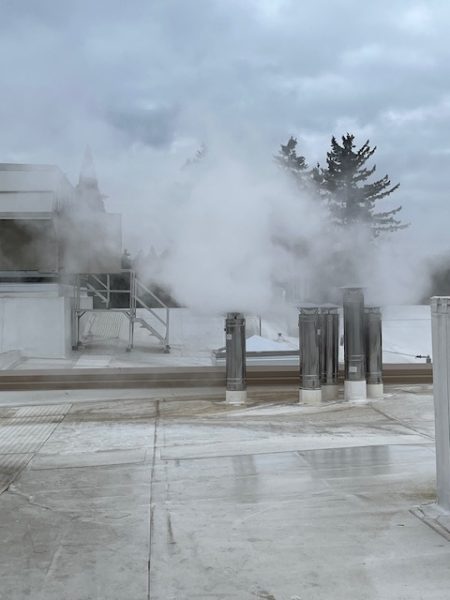
On Feb. 10, 2025, Grant administrators were notified that the natural gas odors had in fact been caused by a “sewer vent” and “lower than ideal” boiler smokestacks that were blowing exhaust into the air handling units of the school’s northeastern wing — confirming Curtin and the PPS maintenance department’s long-running theory. PPS notified Grant administrators that, despite the odor, all results from air quality tests confirm that the air is safe, with “no identified health risks.” As
of early May 2025, an external company has begun raising the height of the boiler smokestacks and installing covers on the school’s air handling units.
After half a decade of deferred maintenance, Grant’s issues with intermittent natural gas fumes may finally be coming to a close.
Delayed responses to maintenance issues are hardly unique to Grant. Robert Price, a retired music teacher who has taught at multiple PPS schools, says that during his six years working at Duniway Elementary School, the district never sent a single maintenance worker to change broken light bulbs in the school’s auditorium — even after numerous work orders were filed. This experience led Price to the PPS Deferred Maintenance Facebook group, an online community where PPS parents and employees share and commiserate over maintenance delays. The group’s page features posts documenting issues in school buildings that have been neglected by the district. On Dec. 29, 2023, Price posted, “How many PPS maintenance people does it take to put in a lightbulb? We don’t know. We put in a work order years ago and no one has come out to do it.”
Before working in PPS, Price taught at a small Catholic school in Santa Fe, New Mexico. Compared to PPS, he says the school was more independent: Staff members often had to resolve maintenance issues on their own instead of filing work orders to the district.
In contrast, Price says, “PPS was such a huge district that there were specialists for everything.”
Yet, in some cases, maintenance workers’ specialization led to inefficiency: When Price was teaching at Forest Park Elementary School, the ceiling of his classroom started to drip. After the head custodian sent in a work order, Price says, “A roof guy would come out, and he’d look at it, and he goes, ‘Well, it’s not the roof. It’s got to be a pipe.’ So the pipe people … come out and look at it. And they say, ‘Well, it’s not a leak in the pipe. It’s got to be from the roof.’ And they went back and forth like that for … nine years.”
The unwieldy nature of PPS’ work order system can also make requesting maintenance all the more daunting. If a staff member notices something that needs repair, they must contact their school’s head custodian — one of the few employees who can file a work order to the district. However, staff members and custodians have no way of knowing where in the queue their work order stands, assuming such a queue even exists. When viewing active PPS work orders as of November 16, 2024, it appears many custodians will file the same work order multiple times if the district didn’t send maintenance employees soon after the initial order was filed.
Ultimately, Price believes understaffing in PPS’ maintenance department is the greatest culprit causing delayed maintenance. “(There are) not enough of them, really, for what’s asked of them in this huge district. So they’re spread pretty thin,” he says. “Seems like the problem is just not enough people to do the job.”
In years past, PPS budget reports state that the district previously froze “hiring for non-teaching positions” to save money. Thus, the projected $40 million budget deficit for the 2025-2026 school year makes the prospect of hiring additional maintenance workers highly unlikely.
Although cutting maintenance staff reduces short-term costs for PPS, the Säzän report says that such reductions will result in significantly higher long-term costs for the district.
PPS has the choice to either further invest in its maintenance for long-term stability, or cut costs amid budget cuts for short-term financial relief. The Säzän report says, “If PPS stays on the current course, the cost of inaction will be untenable to the organization, as operating until failure costs significantly more than planned repairs and replacement.”

